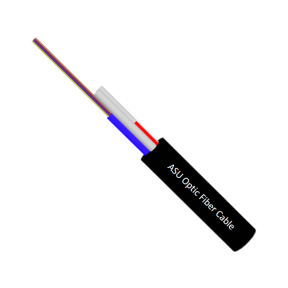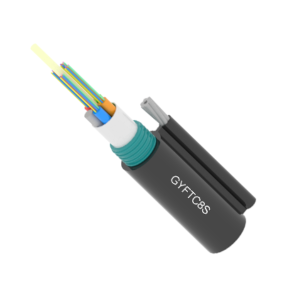Introduction: Overview of Fiber Optic Cables
Fiber optic cables have revolutionized telecommunications and networking since their inception. Initially developed in the mid-20th century, these cables have evolved from a novel technology into a critical component of modern internet infrastructure. Their journey began with experiments in light transmission and rapidly scaled up to facilitate the high-speed, long-distance communications we rely on today. This transformation was driven by the need for efficient data transfer and information exchange across large networks.
Fiber optic cables operate on the principle of transmitting light through glass or plastic fibers. This process is akin to sending signals as pulses of light, allowing data to travel at incredible speeds. As the light moves through these fibers, data can be transferred over vast distances with minimal loss, which makes fiber optics particularly effective for global communications networks. This is a significant advancement compared to traditional copper cables, which rely on electrical impulses that can suffer from signal degradation over longer distances.
The importance of fiber optics in today's high-speed internet infrastructure cannot be overstated. Unlike copper cables, fiber optic cables provide unparalleled bandwidth and speed, essential for supporting growing data demands in various sectors, from residential broadband to large-scale data centers. They are the backbone of high-speed internet, offering advantages such as lower latency and increased durability. As our reliance on digital communication continues to grow, fiber optic cables will remain integral to sustaining the advancement of telecommunications and networking technologies.
Core Diameter and Type: Matching Cable to Your Network Requirements
Understanding Core Diameter in Fiber Optic Cables
The core diameter of fiber optic cables is a crucial element that significantly influences the efficiency of light transmission. Core diameters typically range from 62.5µm to 9µm, with each size affecting fiber modes differently. For instance, a core diameter of 62.5µm is commonly associated with multimode fibers, which cater to shorter distances and simpler optics. Conversely, a 9µm diameter is typical in single-mode fibers, known for supporting longer distances and higher bandwidths. The selection of core diameter is pivotal, as it influences light transmission efficiency and signal loss. Larger cores, generally found in multimode fibers, allow more light to pass through, thus enabling higher data rates over shorter distances. However, they also exhibit higher signal attenuation than their single-mode counterparts.
Impact of Core Diameter on Signal Transmission
Core diameter directly impacts the signal transmission capacity by dictating bandwidth capabilities. Larger cores accommodate more data, making them suitable for environments demanding high data rates over limited lengths. The correlation between core diameter and bandwidth is noticeable in how multimode fibers can manage data rates like 10GbE, 40GbE, or even 100GbE within a data center setting. However, with increased diameter comes increased attenuation and dispersion. Research indicates that multimode fibers experience pronounced dispersion over longer distances, hindering their efficiency for extended communication links. Consequently, single-mode fibers, with their smaller core diameter, excel in long-haul applications by minimizing signal loss and optimizing bandwidth capacity, ensuring robust and reliable high-speed internet infrastructure.
Matching Cable to Your Network Requirements
To ensure optimal network performance, selecting the right fiber optic cable involves understanding the intricacies of core diameter and fiber type. Single-mode fibers, with their reduced core diameter, are ideal for applications requiring long-range data transmission and superior speed. Their low attenuation rates and broad bandwidth support make them suitable for telecom infrastructures demanding reliable and vast data distributions. On the other hand, multimode fibers can be advantageous in scenarios prioritizing cost-effective solutions with manageable data rates over shorter distances. Therefore, the choice between these two types must encompass evaluating distance requirements, desired data rates, and specific environmental conditions to guarantee maximum efficiency and future-proof network scalability.
Single-Mode vs. Multi-Mode: Choosing the Right Fiber for Your Network
Single-Mode Fiber: Long-Distance Efficiency
Single-mode fiber is renowned for its precision and efficiency in long-distance data transmission, making it indispensable for high-demand networks. Its design, featuring a narrow core of approximately 9µm, allows light to travel directly down the fiber without bouncing, minimizing signal attenuation. This characteristic makes it suitable for transmission over vast distances and at high speeds, often preferred in applications such as telecommunication networks and expansive data centers. Single-mode fibers can support transfer distances that are significantly longer than their multi-mode counterparts, often reaching up to 100 kilometers without the need for repeaters.
Multi-Mode Fiber: Short-Range Affordability
In contrast, multi-mode fiber offers a cost-effective solution for short-range networking needs. With a larger core size, typically 50µm or 62.5µm, this type of fiber allows multiple modes of light to propagate, which results in lower material and installation costs. The data rates achievable with multi-mode fibers are impressive over short distances, typically supporting 10GbE up to 300 meters. This makes multi-mode fiber an optimal choice for localized networks, such as within a single building or campus environment, where distances do not exceed a few kilometers and cost-efficiency is a primary concern.
Application Scenarios for Each Fiber Type
To illustrate the practical deployment of single-mode versus multi-mode fibers, let's consider several scenarios. Single-mode fibers are commonly used in metropolitan networks and long-haul telecommunication systems due to their ability to transmit data over long distances without signal degradation. On the other hand, multi-mode fibers are frequently used in local area networks (LANs) and data centers, where budget constraints and distance limit the usage of single-mode fibers. Critical factors in choosing between these fiber types include the expected traffic load, the distance over which data must be transmitted, and financial considerations. Understanding these application-specific requirements is vital to ensuring efficient and cost-effective network performance.

Cable Jacket and Durability: Considering the Environment
Indoor vs. Outdoor Cable Jacket Materials
Selecting the right cable jacket material is crucial when considering the environment where the fiber optic cables will be installed. Indoor cables often feature PVC or LSZH jackets that provide fire safety advantages, while outdoor cables usually require UV-resistant and moisture-resistant coatings like polyethylene (PE) for protection against harsh elements. These materials are designed to withstand specific environmental conditions such as temperature fluctuations, exposure to sunlight, and humidity levels. By understanding these differences, one can choose a jacket material that ensures longevity and optimal performance in either setting.
Durability Factors for Harsh Environments
The durability of fiber optic cables in harsh environments hinges on several factors and standards that must be met. In industrial and military applications, cables must be robust enough to endure extreme conditions, including mechanical stress, chemical exposure, and temperature variations. Certifications like IEC provide assurance of a cable's capability to withstand these challenges. Specific tests, such as tensile strength measurements and fire resistance evaluations, are pivotal indicators of cable durability. Choosing cables that have undergone rigorous testing ensures reliability and minimizes maintenance needs in demanding environments.
Bandwidth and Data Transfer: Ensuring High-Speed Connectivity
Data Transfer Rates Across Fiber Types
Understanding the differences between single-mode and multi-mode fibers is crucial for determining suitable data transfer rates and network performance. Single-mode fiber, designed for long-distance transmission, allows data to travel in a singular path, typically using laser technology, making it ideal for high-bandwidth and long-distance communication—typical of interconnected data centers. In contrast, multi-mode fiber features a larger core, enabling multiple data paths simultaneously, which is more cost-effective and easier to install but suited for short-distance transmissions. According to industry data, single-mode fiber offers lower attenuation and higher speeds, supporting complex network architectures like AI clusters and data centers that demand 100G to 400G data rates (CommScope report).
Future-Proofing Your Network with High Bandwidth
Investing in high-bandwidth fiber optics is essential for future-proofing network infrastructures, especially with the emergence of technologies like UHD streaming and IoT. As data demands intensify, the capabilities of fiber optics to handle large-scale transmissions without degradation become critical. By implementing advanced fiber systems, organizations can avoid the obsolescence of outdated cabling, ensuring that their networks are equipped to accommodate future expansions and innovations. This strategic planning aligns with best practices for optimizing performance and scalability in data center environments, allowing businesses to seamlessly integrate new technologies as they arise, maintaining robust and efficient network operations.
Conclusion: Key Factors in Choosing the Right Fiber Optic Cable
Choosing the right fiber optic cable requires careful evaluation of several critical factors. First and foremost, one must consider the core diameter, which influences the bandwidth capabilities and data transfer rates. For example, single-mode cables, with their smaller core size, are ideal for long-distance and high-speed networks. The fiber type—choosing between single-mode and multimode—is crucial; single-mode fibers offer higher bandwidth over longer distances, while multimode fibers are cost-effective for shorter links. Additionally, the selection of the cable jacket should align with environmental conditions, ensuring durability and compliance with safety standards.
Understanding your specific networking needs and future requirements is imperative for making an optimal investment in fiber optics. A clear alignment with distance requirements, bandwidth needs, and anticipated future upgrades ensures your network remains robust and adaptable. This means assessing not just current demands but also potential growth, which is essential for future-proofing your infrastructure. By factoring in these considerations carefully, you safeguard your networking investment, ensuring it delivers reliable and high-speed connectivity tailored to your evolving needs.
FAQ Section
What are fiber optic cables made of?
Fiber optic cables are primarily composed of glass or plastic fibers designed to transmit light signals efficiently.
What is the difference between single-mode and multi-mode fiber optic cables?
Single-mode fiber optic cables have a smaller core diameter and are optimized for long-distance, high-speed data transmission, whereas multi-mode cables have a larger core diameter suitable for shorter distance data transmission.
Table of Contents
- Introduction: Overview of Fiber Optic Cables
- Core Diameter and Type: Matching Cable to Your Network Requirements
- Single-Mode vs. Multi-Mode: Choosing the Right Fiber for Your Network
- Cable Jacket and Durability: Considering the Environment
- Bandwidth and Data Transfer: Ensuring High-Speed Connectivity
- Conclusion: Key Factors in Choosing the Right Fiber Optic Cable
- FAQ Section

